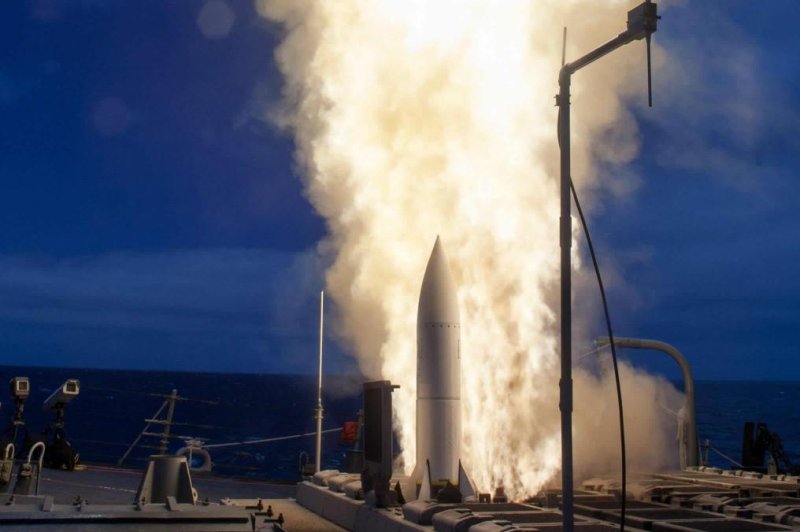TUCSON, Oct. 24 (UPI) -- U.S. Navy Standard Missile 6 interceptors recently destroyed low-altitude supersonic and subsonic targets using remote data for targeting.
Raytheon, maker of the RIM-174 Standard Extended Range Active Missile, said the interceptors were fired from the cruiser USS Chancellorsville as part of an "engage and remote" scenario in which the interceptors were launched using data from another cruiser in the area before the Chancellorsville's own radar had even detected the targets.















